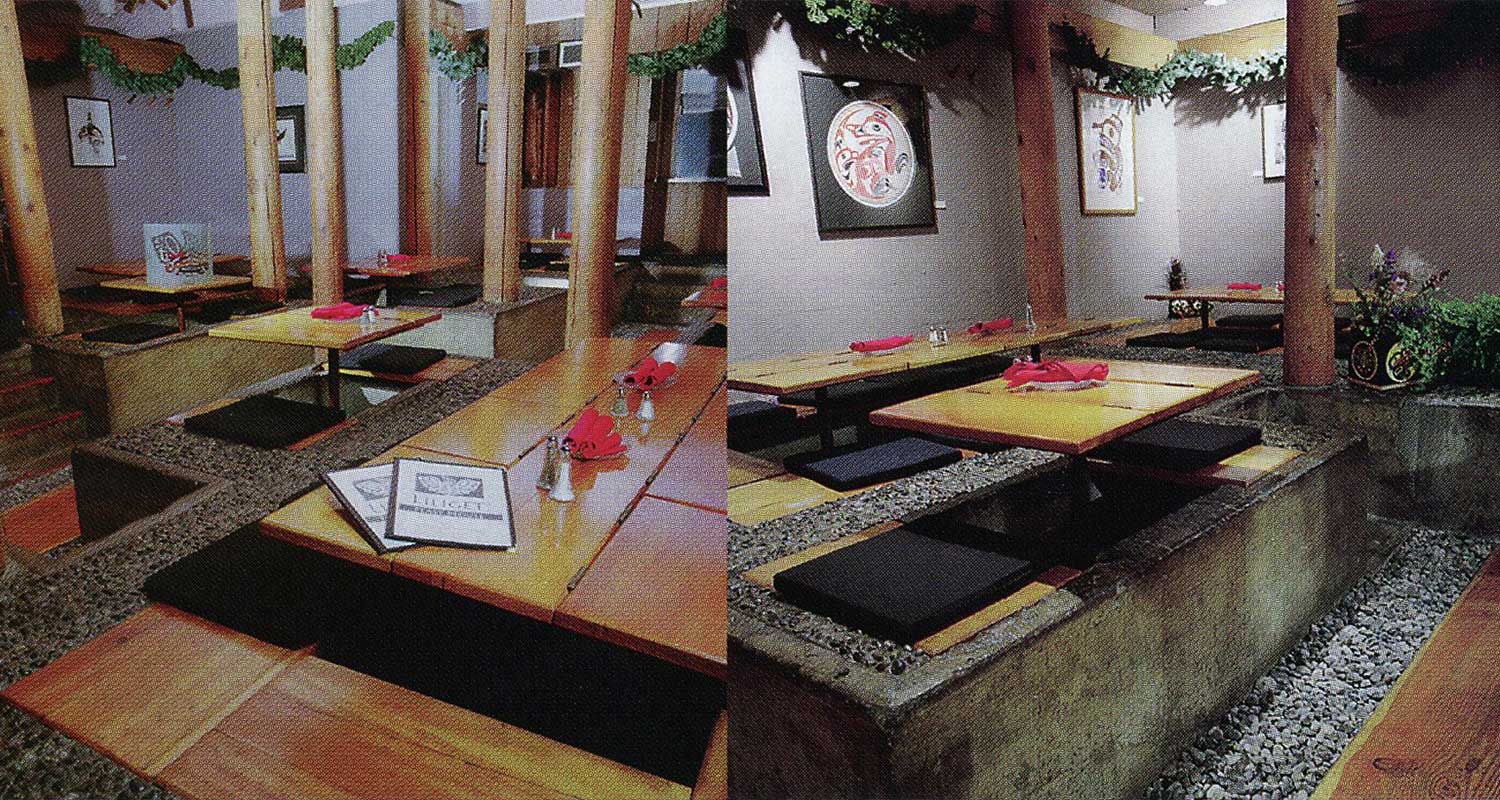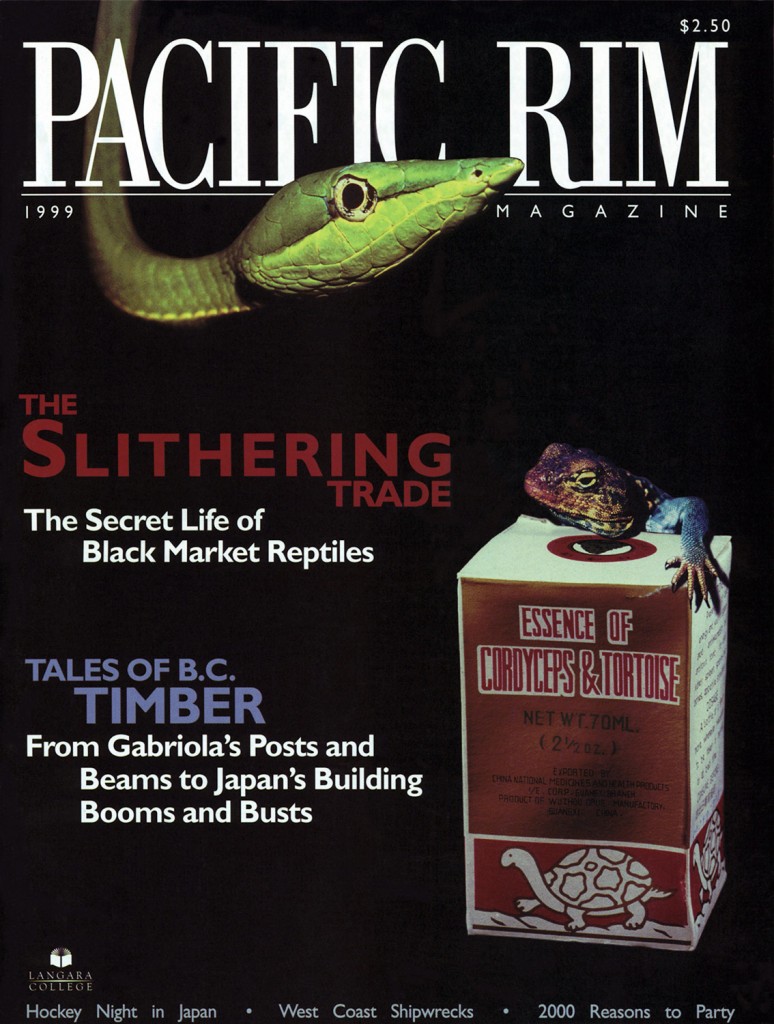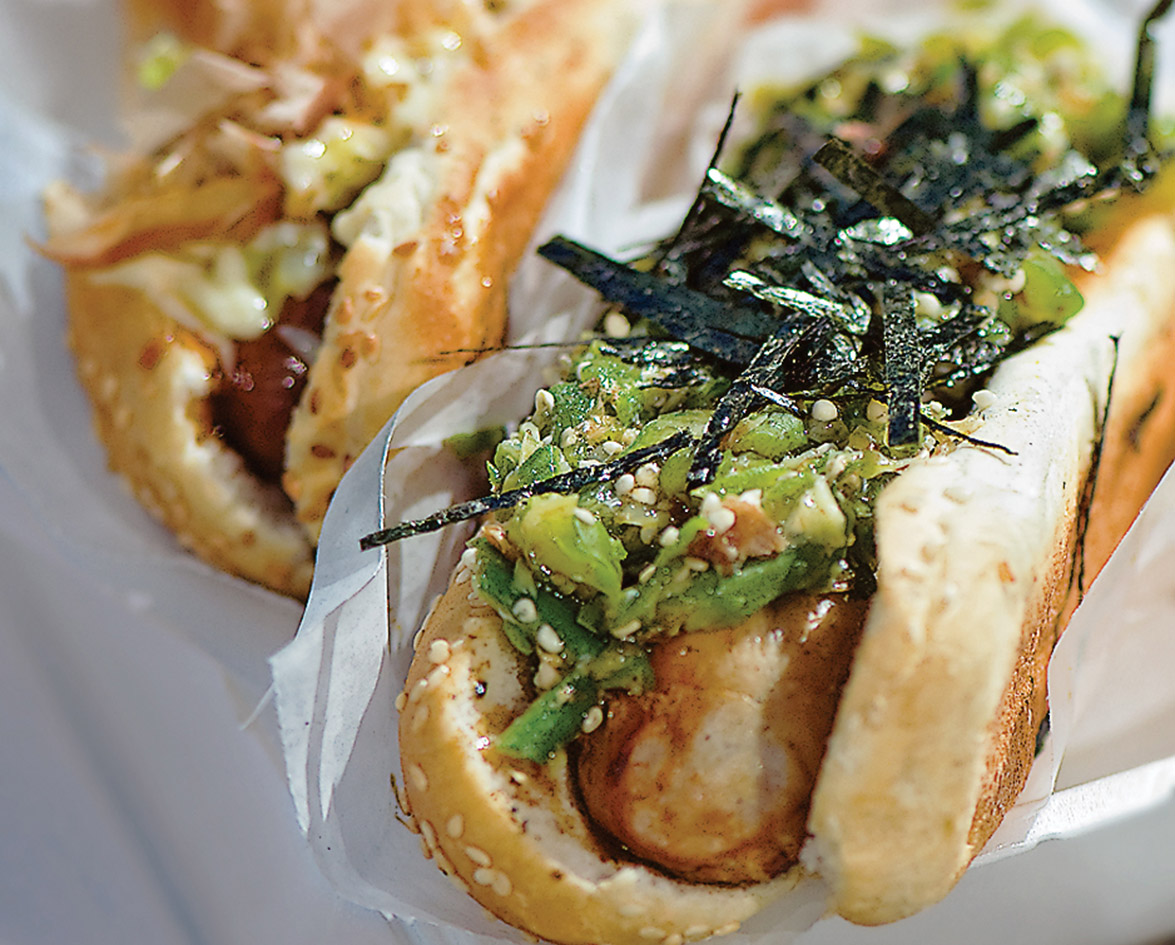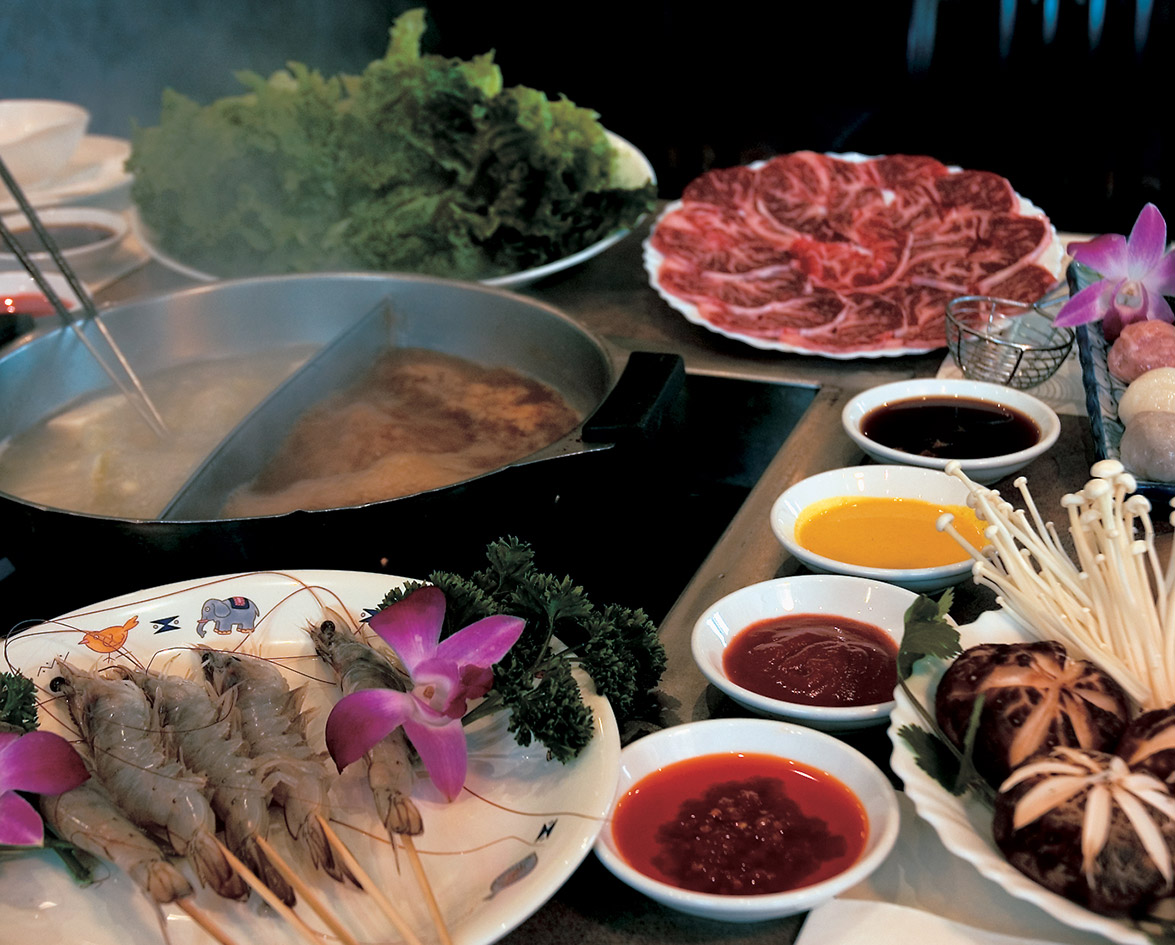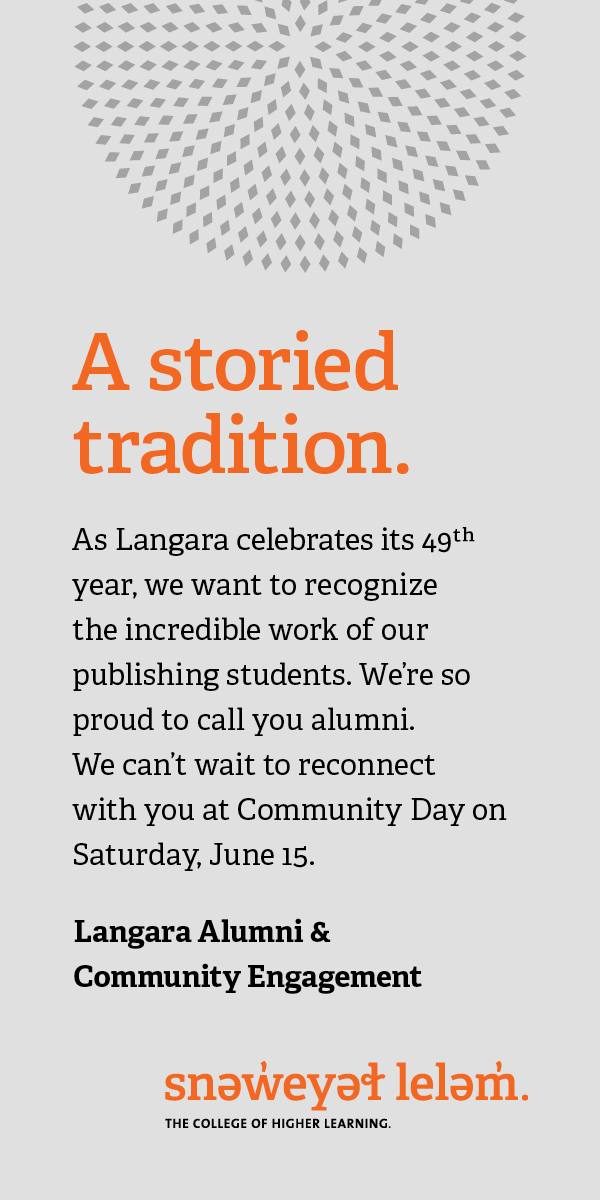Sha-lin Noodle House
656 W Broadway
review by Dennis Chui
My partner and I enter the Sha-lin Noodle House on Broadway near Cambie at the peak of lunchtime. It specializes in fresh authentic hand-pulled noodles of the northern Chinese variety. The restaurant is packed with the typical business-lunch crowd. The decor is sparse, modest and functional with about 16 tables arranged in three rows. In two minutes, a spot opens and the attendant leads us to our table with a view of the windowed kitchen area where two burly chefs pound their hands into hunks of white dough. My mouth waters and my stomach burns with hunger as I watch them pull, stretch, fold and cut noodles.
We order two lunch specials: stewed soup noodles with beef and bean sprouts ($4.95) and fried cutting noodles with meat and vegetables ($6.95), choosing pork as the meat. There are plenty of soup-noodle variations on the menu, with cryptic names like dragging noodles, pushing noodles, hela noodles, cutting noodles and so on. However, they vary only in thickness and length. There are also different toppings to choose from, such as beef, pork, chicken, lamb, seafood, vegetables, tripe and beef tendon.
For the stewed noodles, the chef takes a big lump of noodle dough and stretches it into long ropes, folds it over and stretches it out again. He repeats the process several times until an array of long fresh noodles is produced. A simple yet elegant example of culinary ingenuity, I must say.
The technique for making the fried cutting noodles is different. This time, the chef takes a firmer watermelon-sized lump of noodle dough and carves out slices of thick flat noodles using a tool that looks like a curved metal spatula. Slices fly out fast, landing right into the boiling water. After cooking the noodles, the chef takes them to the kitchen’s rear area where they presumably do all the stir-frying.
A few minutes later, our food arrives. The stewed noodles swim in a clear, hot broth, topped with slices of beef with crunchy tendon bits and marbled fat. It comes with a little dish of bean sprouts, pickled Chinese radish and Chinese parsley that complements the noodles well. The noodles themselves are a Godsend. The firmness, freshness, flavour and gradations in thickness of handmade noodles make them superior to the typical prefab noodles found in other restaurants.
The fried cutting noodles are just as good. They come with little pork chunks, bean sprouts and broccoli. The noodles are thick, firm and delicious. The whole dish has a slight spicy kick that I love. It’s like an ultra-fresh version of the Chow Fun that you get in Cantonese restaurants.
Several minutes later, we sit back and remark at how they’ve got an efficient operation here. The service is fast and prompt, even during the lunch-hour rush. Our bill comes to about $14, which is quite reasonable for this calibre of food. Adventurous eaters with bigger appetites can still get lunch or dinner for two for under $20.
The combination of hot noodles on rainy days should be bottled and sold. I swear it cures all forms of physical or emotional pain. This is the kind of place I won’t mind going to for both lunch and dinner on the same day.
Sha-lin Noodle House is open for lunch and dinner everyday (closed Tuesday nights).
Monsoon
2526 Main Street
review by Charles Macurdy
As you walk into Vancouver’s Monsoon restaurant, the first thing that strikes you is the colour of the walls. They are in turn turquoise and terracotta, a vibrant and welcoming combination. The space is fairly small and narrow, with tables all along one wall and a bar with seating along the other. Thematically, the restaurant has opted for a simple, straightforward decor. A few tropical plants and some bare brick on the wall give it a certain roughness that translates into an underlying casual atmosphere. Soft jazz-funk music played in the background punctuates the experience.
The sign above the door reads “Monsoon: East West Brasserie. “If this seems ambiguous, then look at the menu. It is an innovative blend of eastern themes with the contemporary West Coast bistro style. Most of the menu is either based on, but not limited to, East Indian or Japanese ideas. As such, while maintaining the basic French approach to food that dominates Western cuisine, Monsoon is able to explore and blend numerous themes.
On the advice of my server, I order the almond and raisin panir kofta with masala sauce, naan and an India Pale Ale. The kofta are balls made from panir, an East Indian cheese, and stuffed with almonds and raisins. They arrive in a thick cream masala sauce, which is a yellow curry. Naan is an Indian pan bread used here for dipping. The meal, although awkward to eat, is thoroughly enjoyable. I find the food complements the decor and general feel of the restaurant: inventive, simple and effective. Keep in mind that this is cheese in thick cream and is quite heavy. However, the India Pale Ale, a Nova Scotian microbrew, helps keep the meal from overwhelming the belly. It also provides a sense of balance on the palate. Altogether, the meal costs $15, tip included.
As for the staff, there are only four bodies at work, all of whom appear very competent, if a bit quirky. Although the ability of service staff is easily evaluated, kitchen staff requires more concrete scrutiny. At Monsoon, the open kitchen is clean and the food is good.
It is open from 5 p.m. until “late” and is located at the corner of Main and Broadway, at the beginning of the burgeoning new Main street strip.
Liliget Feast House
1724 Davie Street
review by Michael Colombara
Amidst the hustle and bustle of the city, there’s a place near English Bay that offers diners the opportunity to experience the West Coast native flavour in a tranquil native longhouse setting; a place where the walls are adorned by a striking selection of native art and where pan flute music fills the air. It’s called the Liliget Feast House.
Inside, the restaurant’s unique layout immediately strikes my guest and me. Most of the dining area is raised and a wooden path lined with loose stones divides it. At first glance, it appears that we will be sitting on the floor, as the tables appear to be only half a metre high. However, upon closer inspection, we find an opening for our legs below the tables. The wooden tabletops are cleverly hinged to allow us to easily step into the hollow below.
The word liliget means “the place the people come to feast.” With a name like that, it had better provide a lot of choice on its menu – and Liliget delivers. There are familiar dishes such as halibut and salmon, and less common choices such as rabbit, venison and caribou. Most entrees are priced at the $18 range, with a couple as high as $29.
Our meal starts with a basket of warm native flat bread called bannock. We order salads made from organic greens and delicately flavoured with a raspberry vinaigrette. The healthy-sized salads are served in simple hardwood bowls. For the main course, my guest orders grilled halibut while I have smoked Alaskan cod. The plates are artfully presented with wild rice and grilled vegetables. We both feel the chef has done well, bringing out the flavour of the fish to its fullest.
The wine list is a bit sparse, but we select a bottle of Inniskillin Chardonnay that is a nice addition to the meal. Although we are a bit full after the generous portions, we decide to have dessert and coffee. My guest’s blueberry turnover is as delicious as my unique parfait concocted from soapberries and raspberries. All in all, our bill comes to about $100 before tip.
Liliget provides a stimulating dining experience that is a little bit different from a typical night out. It provides a lot of choice on the menu and good-sized portions of very delectable food.
Liliget Feast House is at 1724 Davie St. and is open seven days a week from 5 p.m. to 10 p.m.





